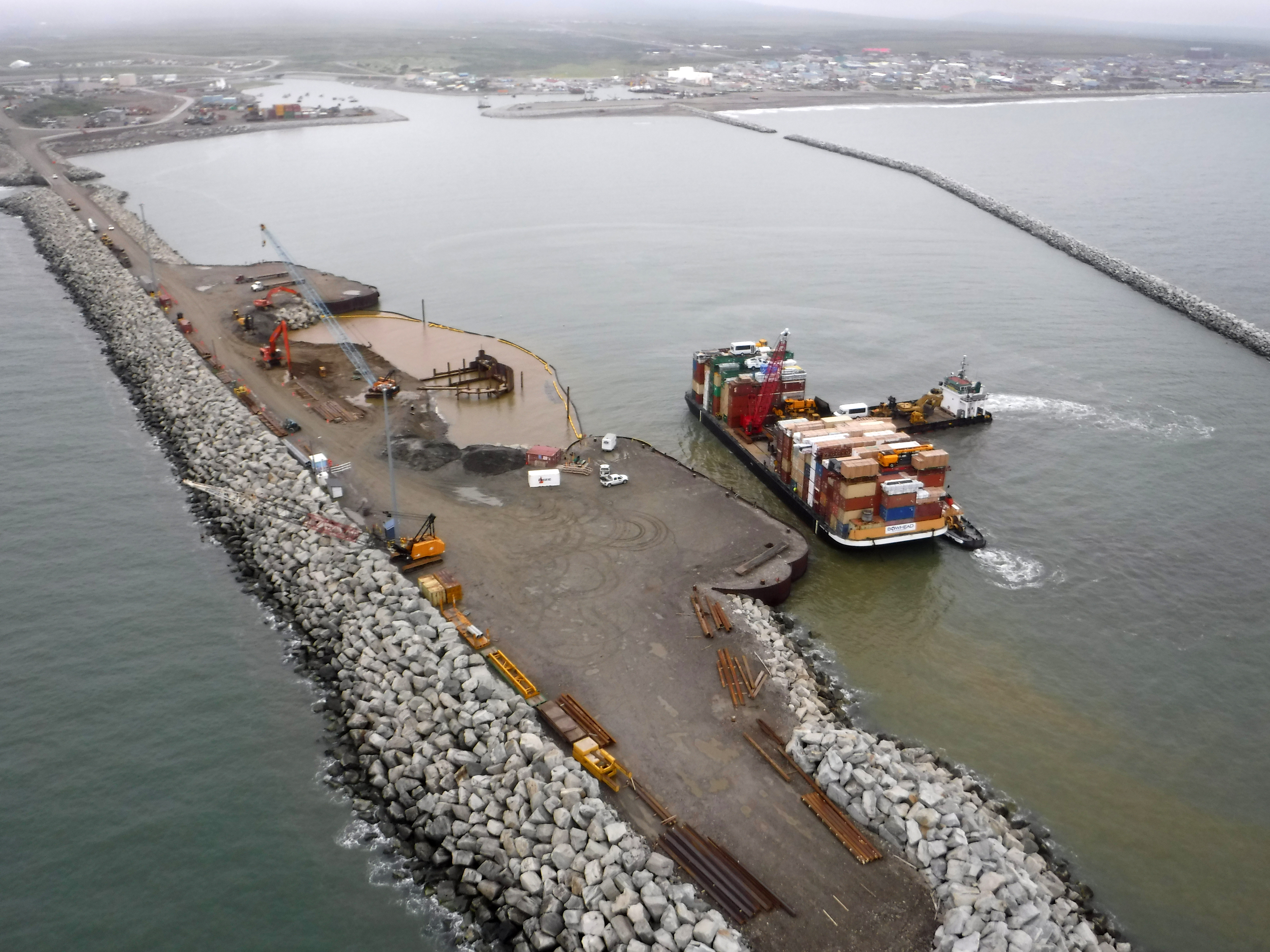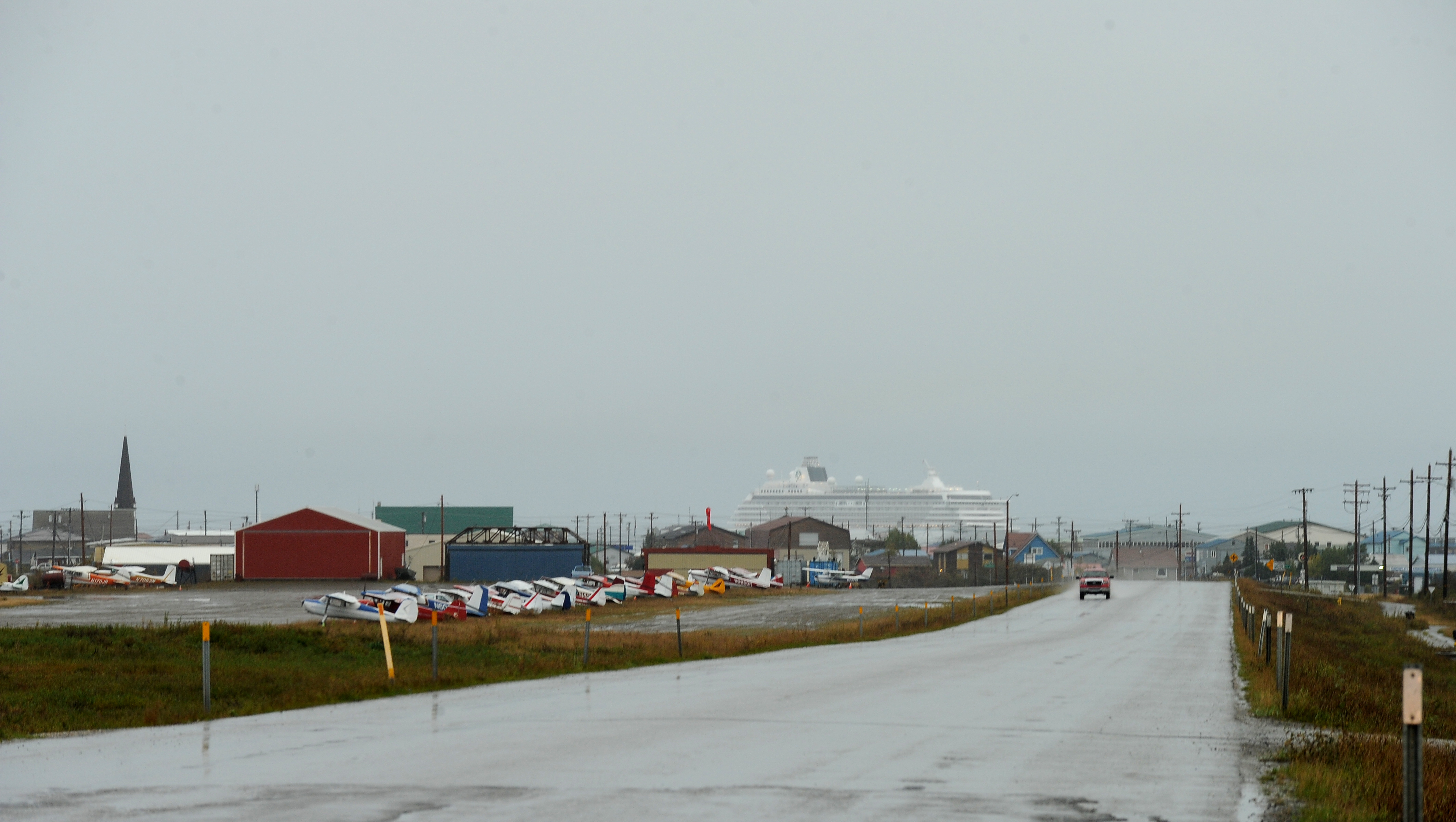Federal water bill requires a fresh look at an Arctic port for Alaska

A small clause in the nation’s most recent water resources and funding bill could breathe new life into plans for a large vessel port in Western Alaska.
The Water Infrastructure Improvements for the Nation Act, passed by Congress and signed by President Barack Obama shortly before the holidays, directs U.S. Army Corps of Engineers officials to add national security interests to the list of reasons why the country should possibly add to the limited maritime infrastructure around Nome.
Specifically, it orders consultation with leaders of the Homeland Security — the agency housing the U.S. Coast Guard — and Defense departments to determine if there would be national security benefits associated with building an Arctic deep-draft port.
Up until now all work on an Arctic port had been based solely on economic merits expected to materialize as sea ice continues to melt and business activity of all kinds in the region increases.
The Corps suspended its multiyear study of such a port in October 2015 shortly after Shell announced it was cutting its Arctic offshore oil exploration program due to high costs and uninspiring drilling results.
In February 2015, the Corps released draft plans to expand the existing Port of Nome at a cost of $210 million.
While shallower than what is usually considered a true deep-draft port, the tentative plan called for deepening Nome’s outer harbor from 22 feet to 28 feet; extending the existing causeway by more than 2,100 feet, thus adding much more sheltered water; and adding a large vessel dock at the end of the new causeway.

Former Nome Mayor Denise Michels said the Corps’ plan drew extensively from a proposal the city drafted in the 1980s.
Nome is not north of the Arctic Circle, but a Western Alaska port would likely be a hub for research, private industry and emergency response vessels working in the Arctic.
Sen. Dan Sullivan said in an interview shortly after the bill became law that he sees the mission change as a significant step toward getting an Arctic port built because of the clout the Homeland Security and Defense secretaries carry.
Nome was selected from 14 potential Western Alaska port sites for its combination of relatively deep water and existing infrastructure. Nearby Port Clarence, a naturally deepwater area where vessels have long sought shelter from open sea storms and ice, came in second because it is undeveloped, Corps Alaska District officials said at the time.
The $210 million economics-based port plan — the cost of which was shared with the state of Alaska — would have had the feds picking up $97 million and state or local sponsors funding the rest. The federal portion was derived from a calculation of what work would have national economic benefits.
How adding national security considerations may change the work that has been done to-date on a deep-draft Arctic port remains to be seen.
A Corps Alaska spokeswoman said the district is waiting for guidance from top brass in Washington, D.C., after passage of the WIIN Act.
Offshore Arctic outer continental shelf oil and natural gas extraction until recently was viewed by industry as the very long-term, but natural development progression in Alaska. However, Shell’s pullout from the Chukchi Sea in 2015 and subsequent orders from the Obama administration aimed at curtailing development in Arctic waters for environmental reasons have combined to cloud that outlook.
Still, experts see the Bering Strait as a potential high-traffic shipping corridor as trans-Arctic routes open.
According to data collated by the Alaska District of the Coast Guard, vessel traffic in the Bering Strait has more than doubled in less than a decade with 485 transits through the maritime chokepoint in 2016, compared to 220 in 2008. The activity peaked in 2015 — at the end of Shell’s offshore work in the Chukchi — with about 540 transits of the strait. Along those lines the number of vessels in the Coast Guard’s Alaska “Area of Concern” north and east of the Bering Strait has nearly tripled since 2008 as well. The increase in maritime traffic has come primarily from cargo, tanker and scientific research vessels, according to the Coast Guard.
The 1,700-passenger luxury cruise liner Crystal Serenity made a highly publicized stop in Nome last August before traversing the Northwest Passage on its voyage to New York City. It is the largest cruise ship ever to call on the rural Alaska port town.
Elwood Brehmer can be reached at el************@al***********.com. (c)2017 the Alaska Journal of Commerce. Visit the Alaska Journal of Commerce at www.alaskajournal.com. Distributed by Tribune Content Agency, LLC.